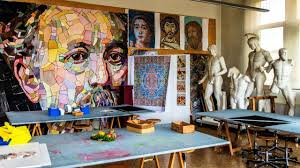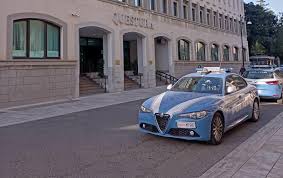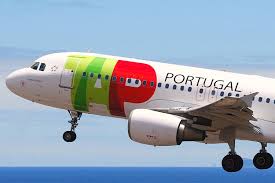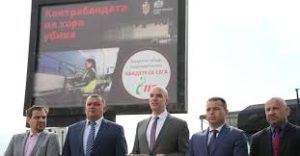Here’s how I reclaimed my resilience hiking the Portuguese Camino
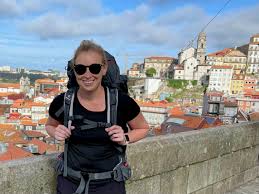
Tony Woodall
Lisbon: The news spread like a California wildfire—and it was heard worldwide. There was a run on First Republic Bank, a 37-year San Francisco financial bedrock where I had worked for 13 years.
My friend from Taiwan, whom I met on a European hike, called me concerned. “Are you going to be alright?” It was early 2023 and Signature Bank and Silicon Valley Bank had just failed. Were we next?
As the bank bled deposits by the billions, management kept telling us we were strong. We were working to bring our clients back. My colleagues and I believed what they said.
I started buying as much of our stock as I could through our Employee Stock Purchase Program. I spent a lot of my recently earned bonus, which, along with my previously purchased shares, was about to become worthless.
On May 1, the FDIC seized the bank. It was the second largest bank failure in U.S. history.
We were shocked. Three weeks later, I was laid off along with more than 1,000 others. It was over and I was suffering a sickening feeling of déjà vu.
Everyone was shocked. On May 25th, I and 1,000+ others were laid off and told not to report to the office today or ever again. I had been recruited from Atlanta in the years after the 2008 mortgage crisis, which resulted in personal bankruptcy. I lost my business, my home, everything.
And here I was again. My time employed allowed me to receive a severance package that would help for a while. Although I told everyone I wasn’t worried, I was devastated. I was close to retirement and had recently bought a home, thinking I would be working here forever.
I walked the Camino de Santiago in 2022, a 500-mile walk from France across Spain to Santiago de Compostela. It took about a million steps. When I received the layoff news, I knew I had to walk another Camino, and with time available now, I decided to walk the Portuguese Camino.
Walking across a country provides a lot of time to think. The Caminos are like life. You wake up in the morning, start walking, stop at the end of the day, wash your clothes, have dinner, chat with family and friends, and go to bed. And you do it again the next day.
I learned six lessons that helped me deal with the stress and uncertainty of life after the layoff.
An experienced pilgrim offered this advice: “We walk each day looking toward the destination. Periodically, turn around and look back at where you’ve been. You will be amazed at how far you’ve come and what you accomplished. You’ll be inspired to keep going. You’ll see some incredible sunrises, too.” I have been very successful in my life. I’ve achieved many of my goals. I came to First Republic with a credit score of 540. It was now over 800. I will move forward.
There is a saying, a mantra of sorts on the Camino: Ultreia. It’s Latin and means “keep going.” My knee started hurting, walking down a small hill into Navarrette. I hobbled into the village, checked into a hotel, and texted my Camino Coach, Jeff, whining that I probably couldn’t continue. He replied, “Ultreia.” The next day, I took a taxi to Najera and saw a doctor who bandaged my knee. I woke up the following day and started walking much slower, one step at a time. The best part of my Camino began.
I’m grateful my knee blew out. It made me slow down. With a bandaged knee, I searched for a place to eat dinner. I ran into four women, two from Taiwan, one from Germany, and one from Japan, whom I hadn’t seen since the first day on the Camino. We were able to catch up and walk miles together, growing a friendship that remains today. I walked slower and fewer hours. I stopped in villages and slept in Albergues that I would have otherwise walked, missing the wonderful hosts who helped me and became friends. Slowing down allowed me to meet people later from around the world who would become my Camino family.
The Cruz de Ferro, or Iron Cross, is the highest point on the Camino Frances. Camino tradition has pilgrims bring a stone or other item symbolizing a burden they have been carrying. They leave it at the foot of the cross. I carried two stones. One represented the anger I held for my ex-wife. The second stone was for the fear holding me back from moving ahead to do what I wanted to do next—work for myself. I left the anger and fear at the Cruz de Ferro.
My knee injury didn’t stop my Camino; it made it a success. I was able to meet the people that would become my Camino Family. Pilgrims share a common goal: bonding and becoming friends, allies, and family. I achieved my goal of meeting amazing people from around the world who would become friends for life. I walked into Santiago with my Camino family and celebrated our accomplishments. I continue to talk to my family members on WhatsApp on a daily basis at times. I’ve been offered to come to their country and stay with all of them if I want to.
I walked the Portuguese Camino with one of my Camino friends half my age. We hiked from Porto, Portugal, to Santiago in Spain in 10 days at about 28-32 kilometers a day. I kept up. It was tough and challenging. It felt powerful and life-changing. We met another friend in Santiago and walked another 100km to the Atlantic Ocean. Walking over 1,000 miles in two years across two countries helped me realize I can do hard things. I may be 65, but I can walk across a country. I can do what I need to do.
The layoff provided time to think about my life and where I want to be after this latest loss. After the failure of companies in financial services in my last two careers, I decided it was time for a change. I decided to retire from that industry and start my own business. It’s a significant change, but these six lessons help keep my mental health strong, stay motivated, and focus on the opportunities ahead.


